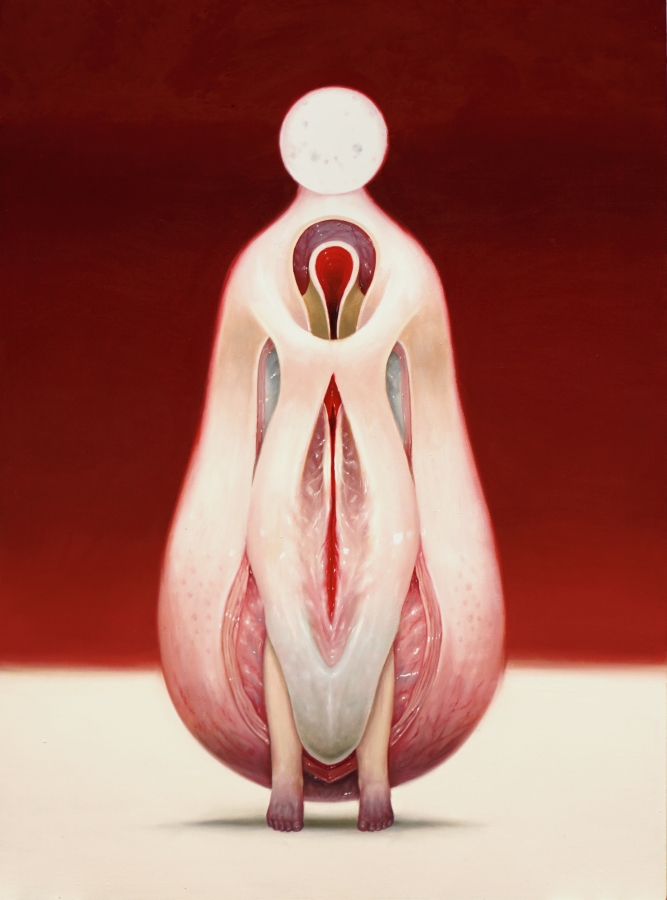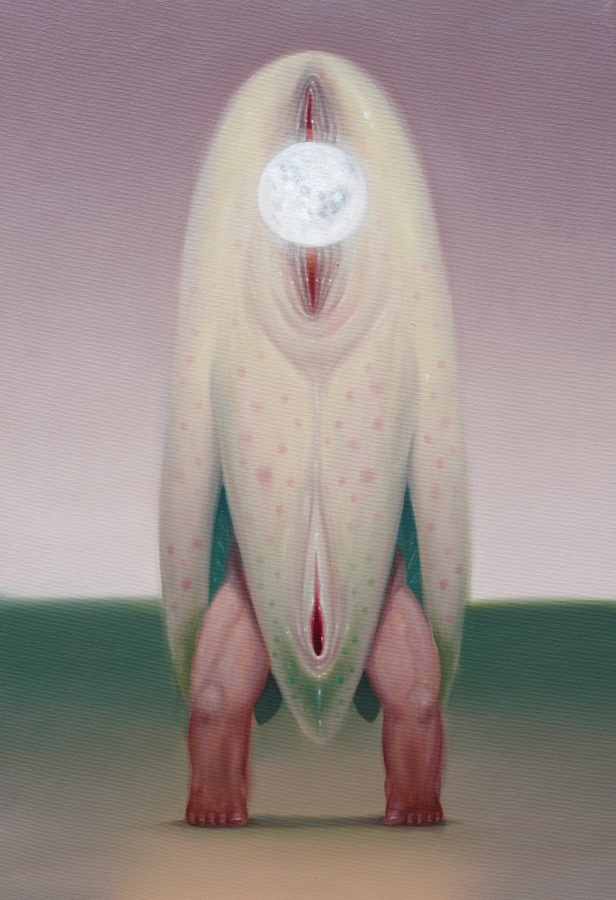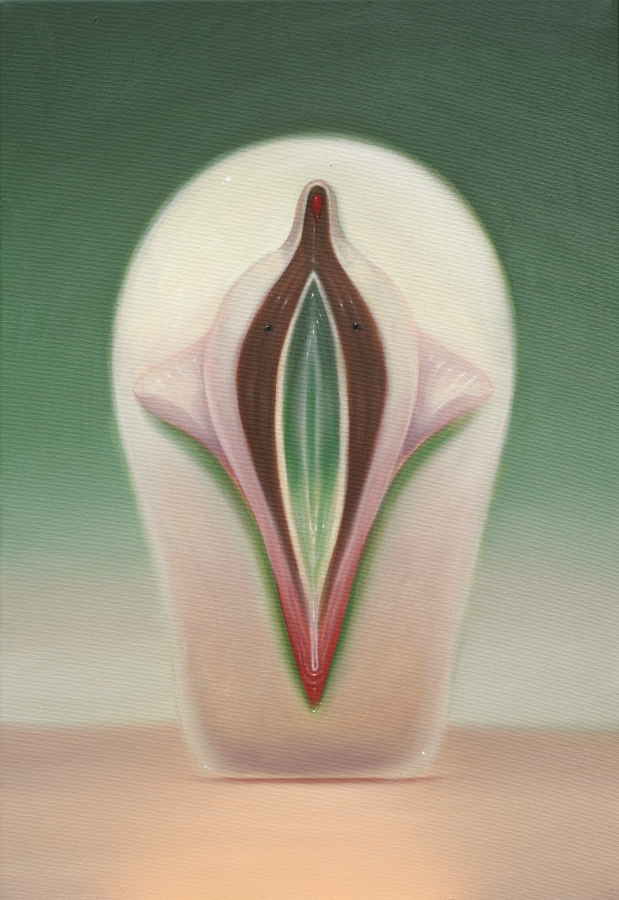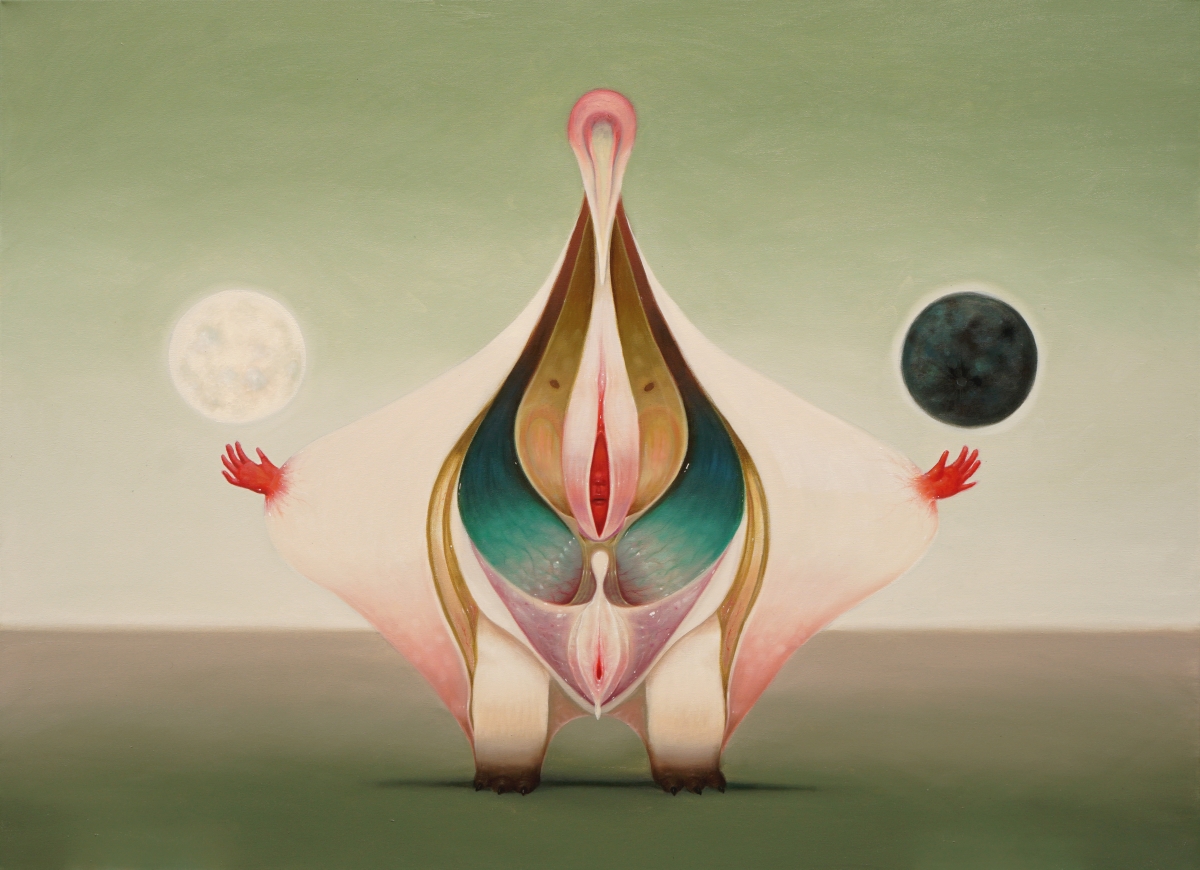
Artist’s Biography
Roby Dwi Antono’s art is a window opening onto the fantastical visions of childhood. The artist’s world oscillates between graphic art, especially illustrations for children, and science fiction. Antono is inspired by themes from pop culture and employs macabre humor to highlight the contradictions of the human experience.
Roby Dwi Antono constantly questions the living and lived experience, producing hybrid or monstrous creatures bursting with Joy & Sorrow, to quote the title of one of his artworks. Creating a deceptively sweet, childlike atmosphere, Roby’s dolls, with their horrifically empty stares, give us a sensation of troubling strangeness caused by something that feels very close but is nevertheless unknown.
Roby subtly steps across centuries: from the most personal to the most universal, he recreates the world of Hieronymus Bosch and his Garden of Earthly Delights, staging the conflicts of the human experience, which is torn between animality and humanity, suffering and pleasure, good and evil.
Closer to our own time, Roby Dwi Antono’s work is rooted in Max Ernst’s surrealism or the Pop surrealism of Mark Ryden. Roby finds his inspiration in the great picture book of childhood, with its monsters and its disturbing creatures and dolls. These surrealist creations that once lived only in Dwi Antono’s imagination come to life once again in this exhibition.
Bio source:- Milena Oldfield, researcher at Almine Rech
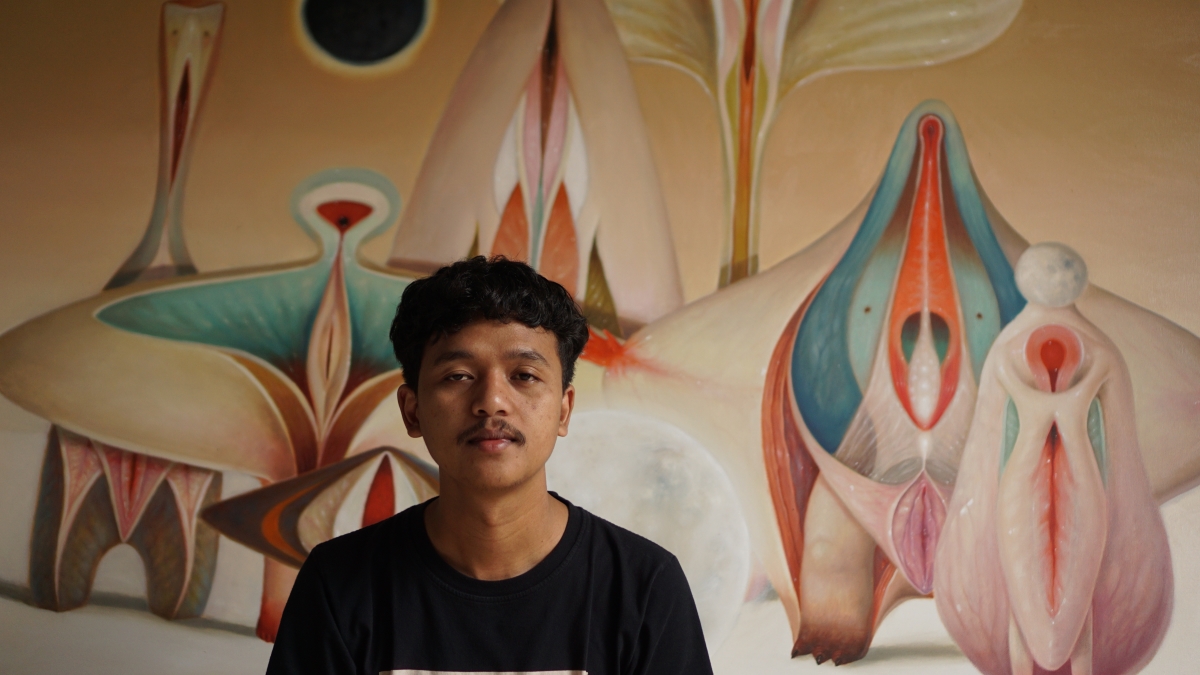
Interview
Artist: Roby Dwi Antono
By Carol Real
Since you don’t have formal art training, what motivated you to pursue this career? How did you start painting?
I didn’t attend art school and have no formal arts training. I think my interest in art has grown since I was a kid and persisted until high school. After graduating from high school, I decided to go straight to work. At the time, I was a book cover illustrator for a school yearbook company. I learned to use design software by myself from the Internet and books because at that time I didn’t have any teachers or friends to teach me. Naturally, my skills and love for the visual arts are improving. I drew and doodled before and after work to express my artistic ideas. At that time, I admired one or two artists and allowed their work to dominate my work. Currently, I don’t limit myself, and many artists and artworks influence me. I embrace whatever intrigues or opens me up to new possibilities for exploration and experimentation.
Can you tell us about your life’s journey?
I never planned my life path. Everything runs naturally and moves with the flow. It all began when I was offered a space in an exhibition. I made several drawings and paintings entitled Imagination. Many people appreciated my work in this exhibition, so I decided to resign from my illustrator job and focus on being an artist. From that moment, I received invitations to participate in group or solo shows at several art fairs or galleries. In my artwork, I’ve always explored many kinds of styles, media, and concepts that are different from earlier ones.
At first, Mark Ryden’s and Marion Peck’s surrealist works inspired me. However, I further developed this surreal concept by fusing my own experience and various pop stories or pop icons to create characters such as Ultraman, Godzilla, Dinosaur, etc. Mountain landscapes, tropical plants, flowers, or house decorations brought back childhood memories of “home.” Over time, I tried new concepts. Initially, there were many icons on one canvas. However, they shifted to focus on one figure with a surrealist concept like my work New Beginning (2019).
Then, I explored other media, such as spray paint on canvas or spray paint on galvanized plates. This brought back memories of spray-painting murals in high school.
I’ve also changed my medium to oil stick and oil pastel on canvas, triggered by my childhood memories of elementary school. I wanted to reminisce about how happy and expressive I was using crayons and oil pastels. It turns out that I was happier using oil pastels because I didn’t have to think about beautiful objects. I could play with colors, and freely create icons, such as Ultraman or dinosaurs with human heads. These experiences were a real relief for me. Here is one of my artworks that uses oil pastel on canvas as the medium:
In addition, I was influenced by Yoshitomo Nara’s works. These works, in my opinion, portray young children’s faces as fully expressive yet with powerful eyes. Because of that, I’ve created several portraits and focused on the subjects’ eyes to produce an overall mysterious impression. Sometimes they smile but with a blank stare or dazed look. I think it would evoke a special memory for anyone who saw it. I really love comparing the persona/image of these children to myself, as someone who is still interested in life’s mysteries. Through the eyes of these children, I want to convey that whatever happens in the future will cause excitement and fear because we never know what will happen tomorrow. This is a similar message to the Moon symbol, commonly found in some of my paintings exhibited at until recently.
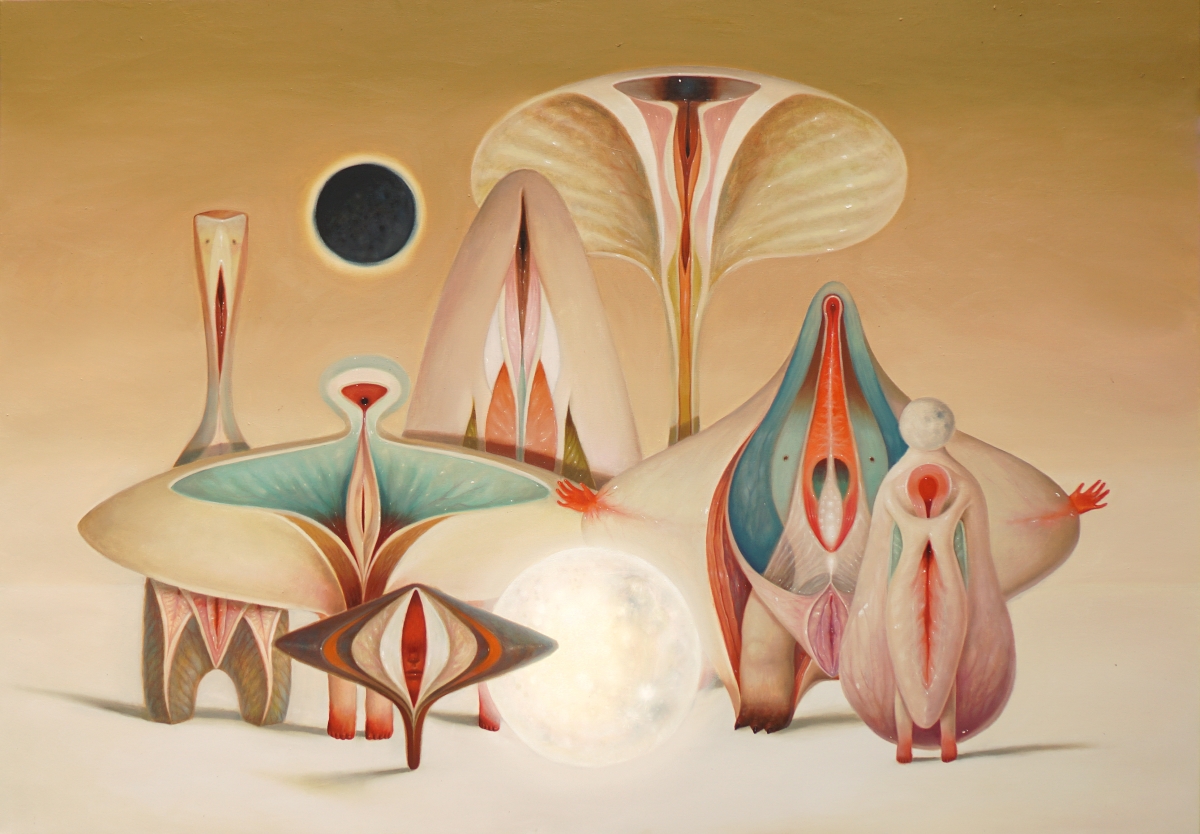
© Roby Dwi Antono / Courtesy of the Artist and Almine Rech
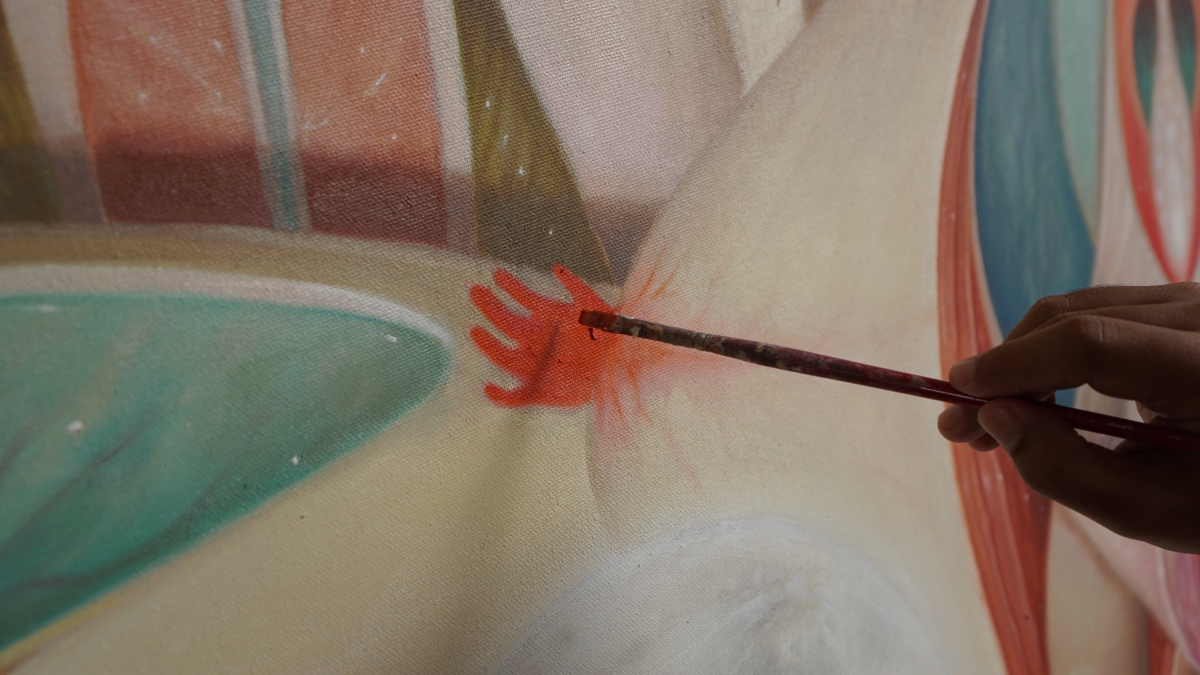
© Roby Dwi Antono / Courtesy of the Artist and Almine Rech
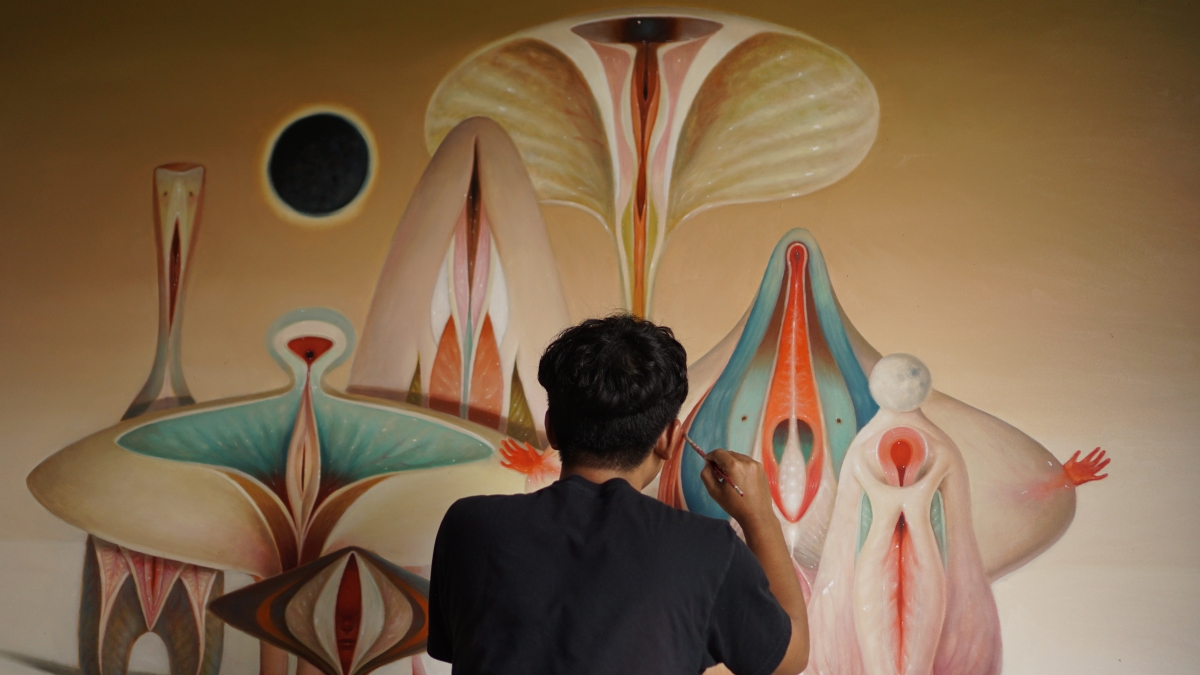
© Roby Dwi Antono / Courtesy of the Artist and Almine Rech
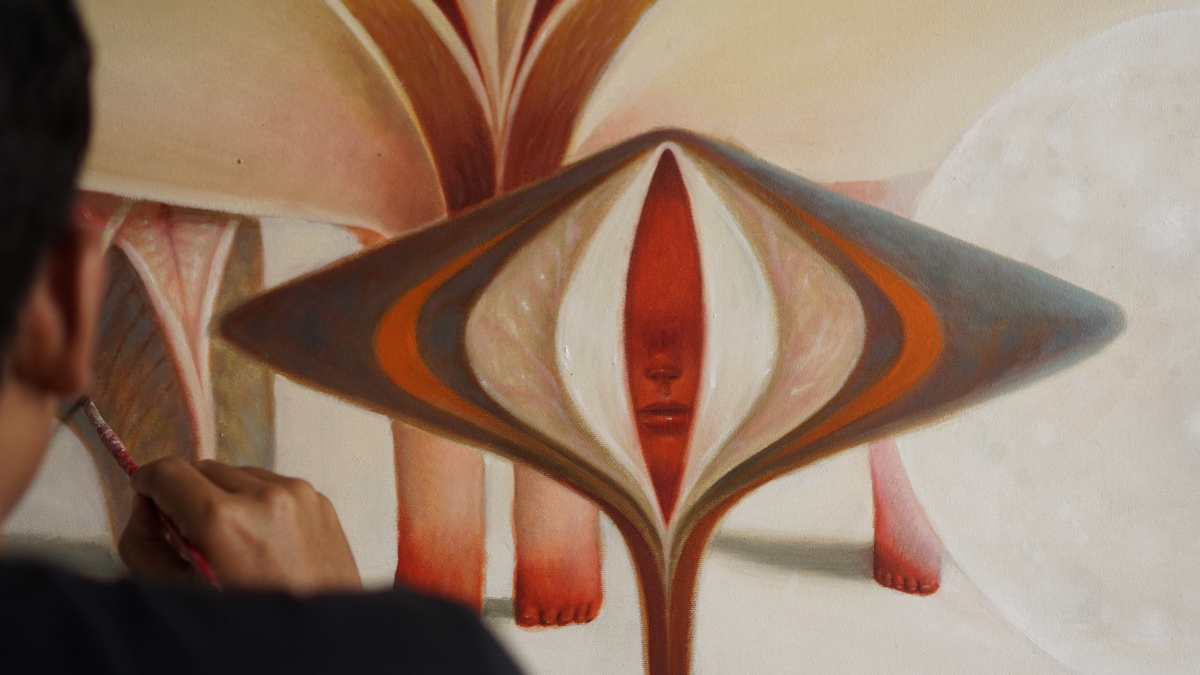
© Roby Dwi Antono / Courtesy of the Artist and Almine Rech
Who has been your biggest artistic influence?
I recognize that anything or anyone that influences both my life and my artwork changes all the time. The people who inspire my art today are different from those who inspired me when I first became an artist. I really love combining and mixing different artists’ styles. Therefore, being a professional artist for a decade, my art style developed according to my experiences, references, and environment. However, the iconography remains the same: children, pop culture icons, mythical creatures, natural landscapes, panoramas, and dream scenes—in short, pop surrealism.
Can you tell our readers what life experiences are reflected in your work?
I believe that humans are fundamentally an accumulation of their past experiences. Even the smallest and most mundane actions we take today can have a significant impact on the future. In that sense, the future should be predictable, but it is not. It remains mysterious, with many unforeseen possibilities that can only be known over time. That’s why we often feel anxious thinking about the future and, personally, that’s why I always reflect on my past.
There are few memories I vividly recall, even after a decade. For example, my father’s blacksmith workshop in my hometown of Ambarawa. I could close my eyes and describe everything in detail: the old T-shirt my father was wearing, the teak wood bench where the customer sat and waited, the sound of iron crunching and clattering, the smell, and the flickering of burning coal. Other childhood memories I have are the view of Mount Telomoyo on my way to school, visiting Umbul Senjoyo with my father, and playing with friends in the river near my house.
Of course, that happiness was also balanced with the gloomy moments, such as the occasional bullying that sometimes made it uncomfortable for me to come to school. I also realized that after all these years, I usually felt like a quiet child, isolated and alone. Some of those memories are blurry fragments, so I’m not sure if I can remember them accurately. Sometimes, I go into more detail than the big picture. Nonetheless, reminiscing about everything that happened never fails to evoke emotions and sentiments that motivate me to create.
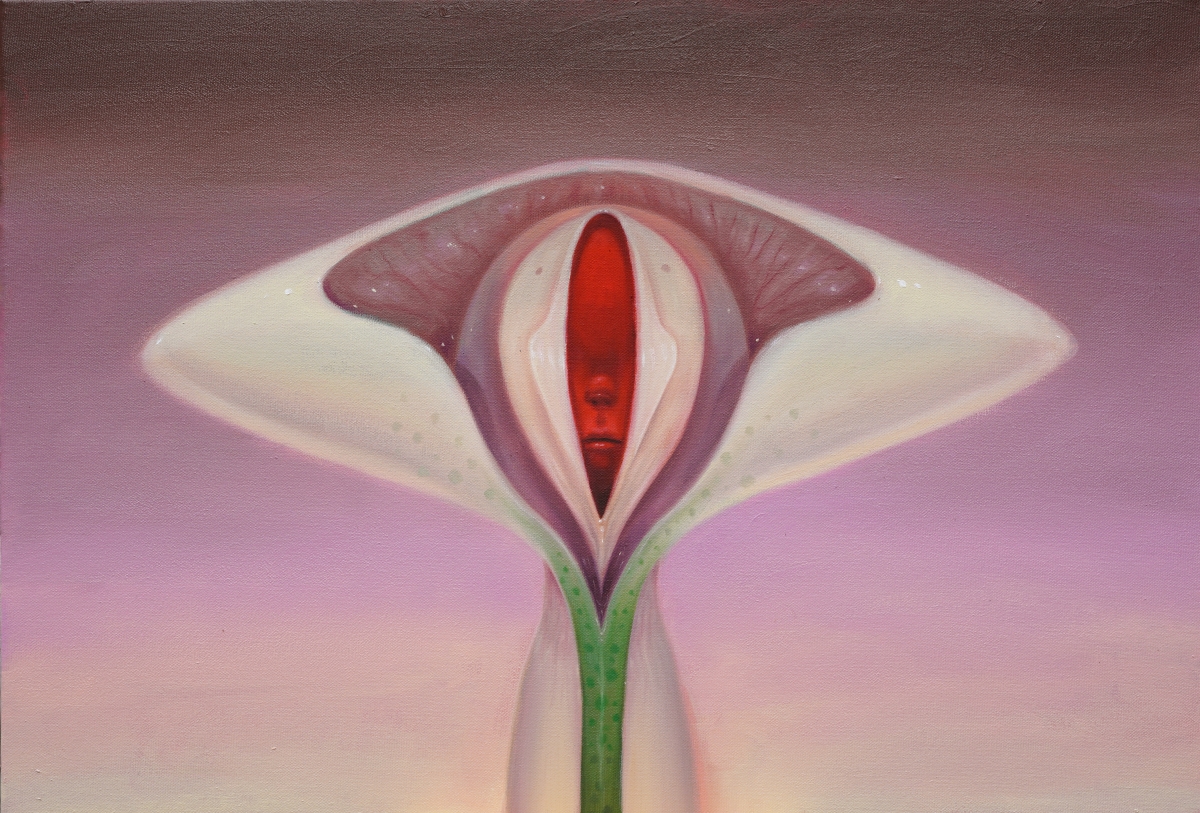
© Roby Dwi Antono / Courtesy of the Artist and Almine Rech
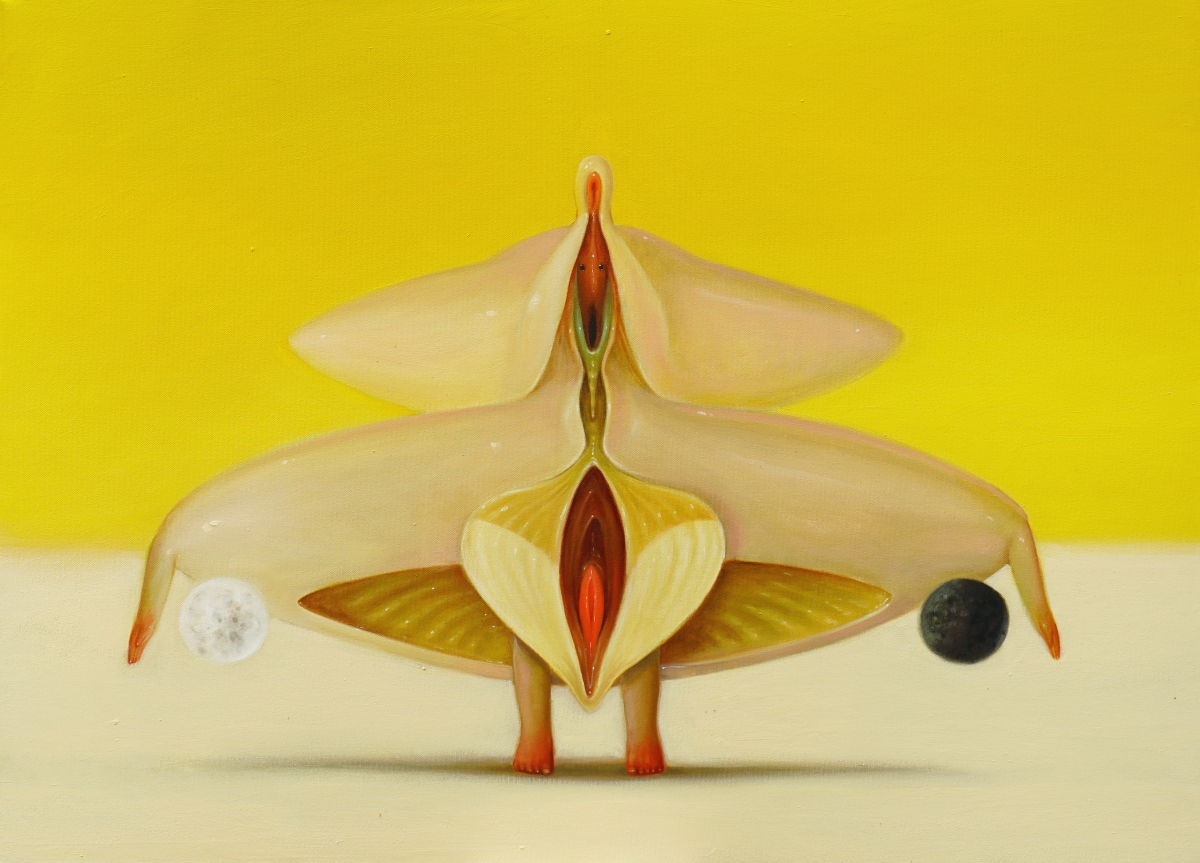
© Roby Dwi Antono / Courtesy of the Artist and Almine Rech
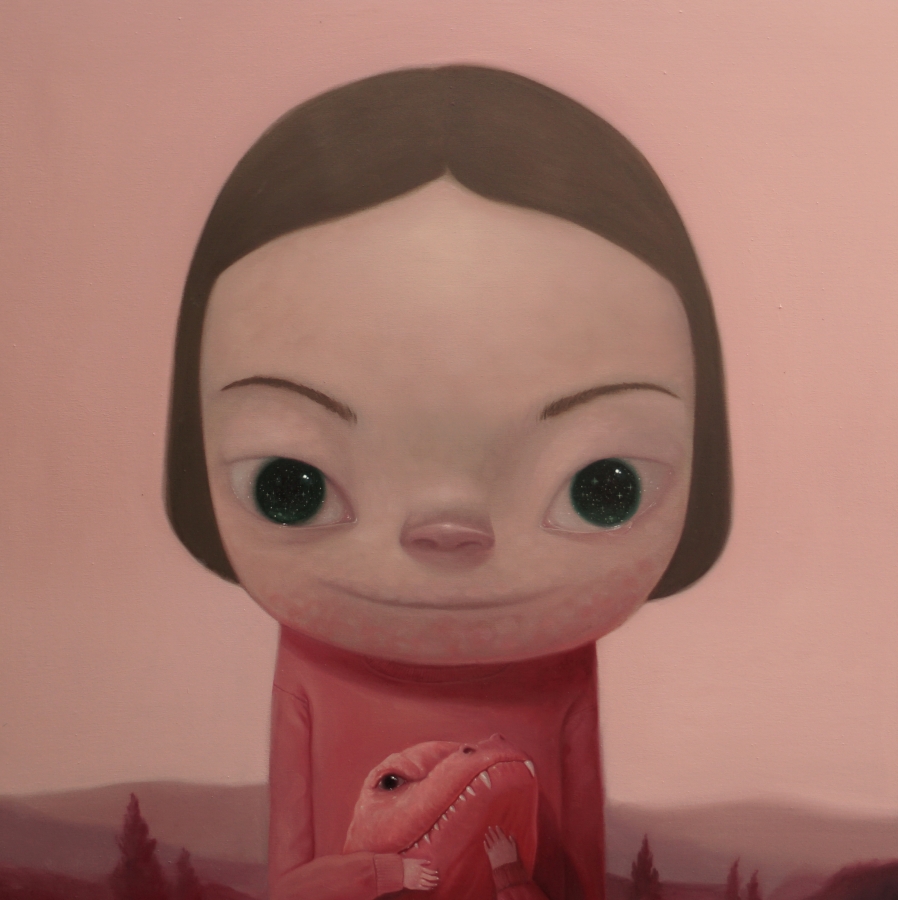
© Roby Dwi Antono. Courtesy of the Artist.
Your artwork is elaborate and full of details. Do you use technology? What challenges do you face?
Sometimes, I get inspiration from my dreams. Even though I can’t remember them clearly or accurately depict them, I make a raw sketch of the characters and settings, so I won’t forget about them. The characters and settings that emerge from my dreams are strange shapes and colors, illogical, and totally abstract. I find it interesting, however, to translate it visually. Of course, I modify, add, or subtract many of them according to my imagination. I feel like I’m giving soul to dream creatures. Viewing other artworks, strange creatures from movies, and old pictures from the Internet inspire me. I love retrieving memories from the past and combining them into another form that represents a different meaning.
I sketch and compose with pencil on paper. Then, I turn it into digital form using Photoshop or Procreate. After carefully determining which composition is right, I scan it onto the canvas using a grid system or a projector.
Where do you get inspiration to create works so rich and diverse in styles and themes?
As I mentioned before, I draw inspiration from many sources. When I was a kid, I liked watching movies about dinosaurs and aliens, and I was totally in love with them. Several films such as Mars Attacks, Men in Black, Star Wars, Jurassic Park, The Lost World, The Dinosaurs, and many others left a strong impression on my childhood. I am also a fan of TV, especially the Discovery Channel and National Geographic Channel, which usually present pre-historic creatures and the universe as a mysterious cosmos. All my interests stimulate my imagination to always hope it’s real and can be found. As a kid, I always dreamed of raising dinosaurs. I love using many symbols in my paintings because everything has its own meaning. Dinosaurs, or other prehistoric creatures, and sometimes the tiny microorganisms in my works represent the past. The array of bacteria or microorganisms represents the past when life first appeared 2 billion years ago.
We can never return to the past. Stored in our memory, we can recall and revisit it, but not always accurately. It’s a bit like a researcher or scientist who rearranges the shape, colors, and texture of each dinosaur species with the help of a computer or advanced technology. In my opinion, they can bring dinosaurs “back to life.” However, the creatures are inaccurate. They can only get close to their appearance. It is because they had never seen them before. Dinosaurs became extinct before humans appeared on Earth.
On the other hand, the symbols of aliens, star clusters, and other matters that make up the cosmos represent the mystery. In movies, we are more often visited by aliens with advanced intelligence and civilization. We know that many questions about humans and the universe remain unanswered, or may be answered. Scientists are caught in a race to learn more about the universe.
This new series of artworks gave rise to ideas about the relationship between humans, time, and nature. Human actions and experiences of the past always become the roots of present-day events and future ones. Everything we do, even the smallest actions, can have big consequences for us. Time flies fast. Humans have always faced worries and fears about their mysterious future. Humans couldn’t predict their future exactly. They could only hope for better things to happen.

© Roby Dwi Antono / Courtesy of the Artist and Almine Rech
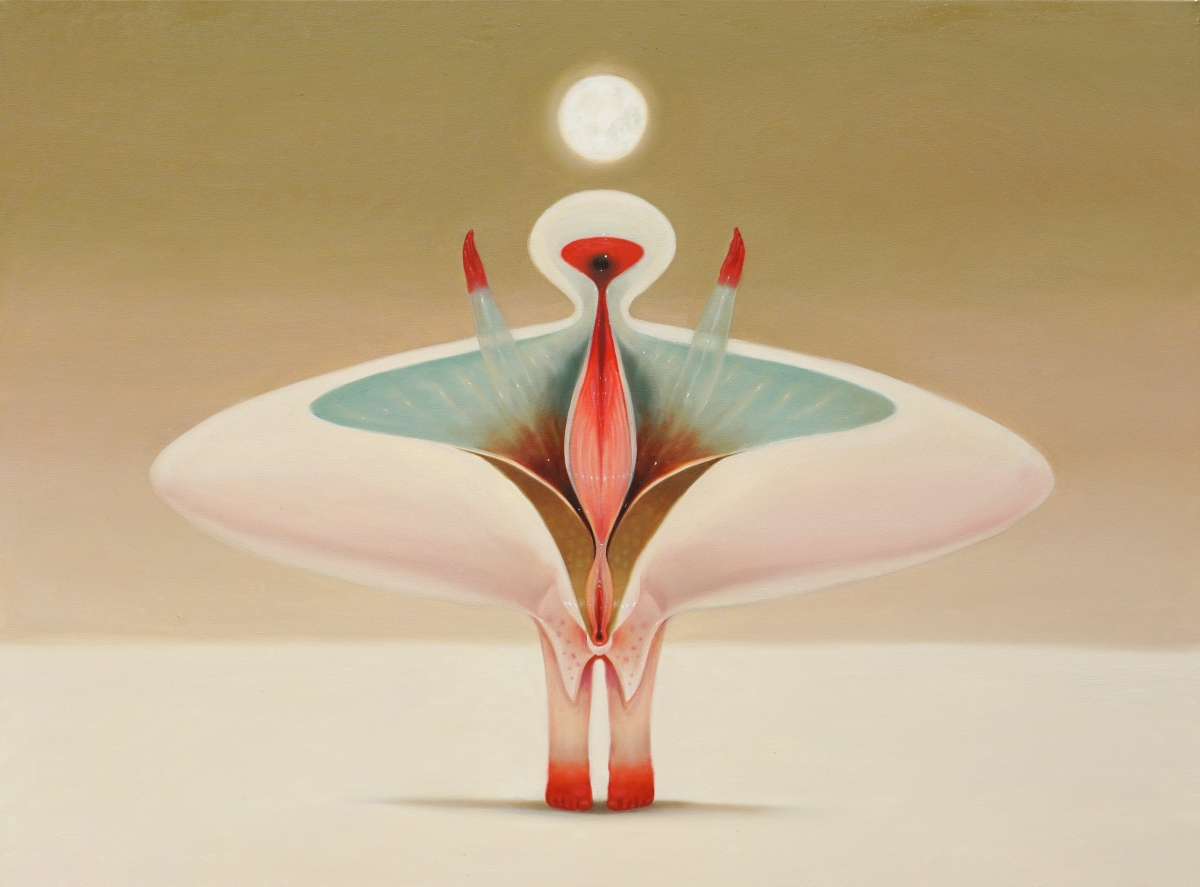
© Roby Dwi Antono / Courtesy of the Artist and Almine Rech
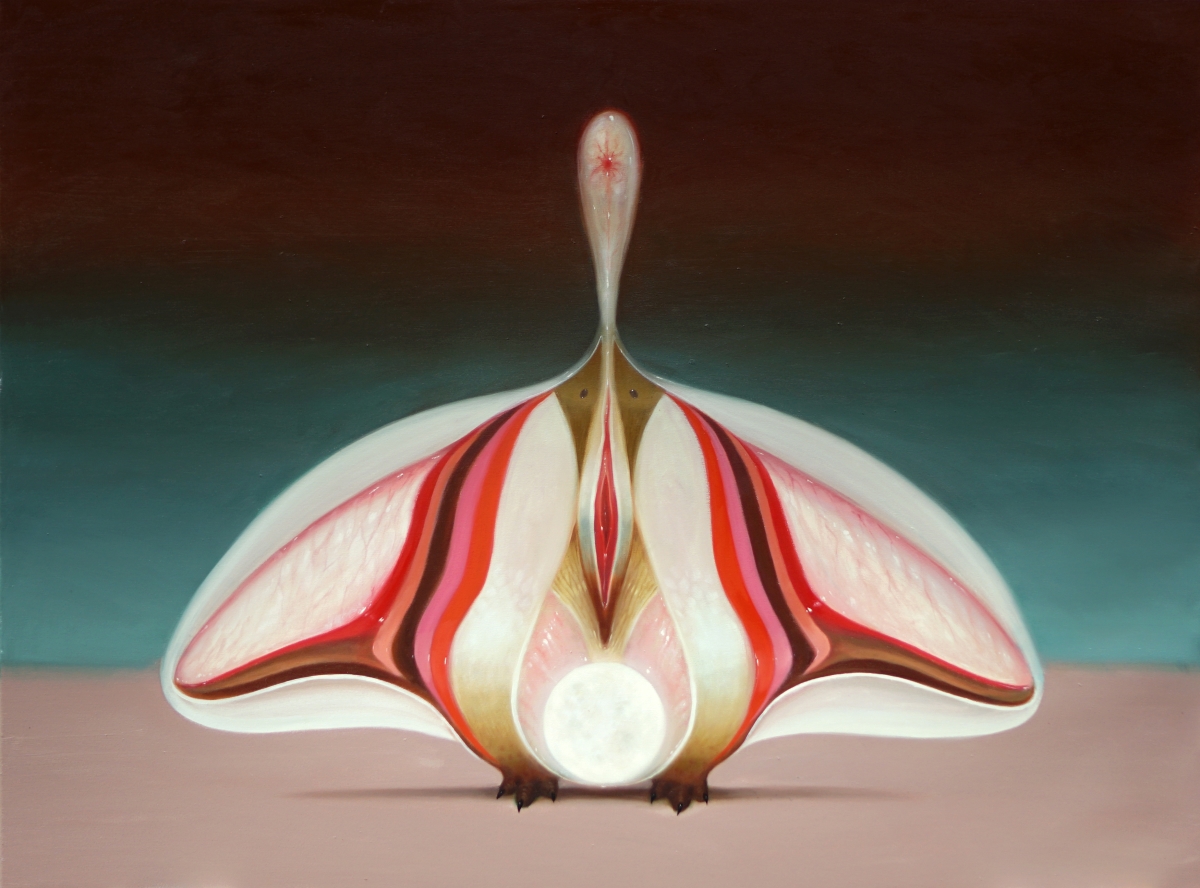
© Roby Dwi Antono / Courtesy of the Artist and Almine Rech
What is the most crucial factor when creating a painting or sculpture? What elements make your artwork unique?
In my opinion, strategic foresight and the consideration of new possibilities, including concepts, trends, mediums, etc., are crucial factors.
Which of your pieces are you most proud of and why?
The painting I am most proud of is from the series “Autopsy of Mystery.” I am fascinated by how our body organs are connected to each other. When an organ malfunctions, it affects another organ. I am also amazed at how our bodies can self-heal. I learned about the rhythm and harmony of our bodies created by our organs’ synchronized functions.
There is a fascinating fact that confuses me. Actually, I’m afraid to see blood, wounds, or sadistic and brutal scenes in movies. I tend to skip that part. On the other hand, I really enjoy painting the colors and textures of flesh, vessels, and other organs. These organs have interesting visual characteristics to me. If you look at it from a conceptual perspective, I have created a series of paintings about autopsies where I show surgery scenes. An autopsy is one of the medical procedures used to examine a deceased body thoroughly. This procedure is usually performed to determine the cause and method of death. Generally, an autopsy is done for unnatural deaths.
“The Autopsy of Mystery” series explores empathy. Alternatively, it is known as tepo seliro (Javanese term), which means tolerance. Empathy is an attempt to gain a deeper understanding of other people’s feelings. Humans need to look within to understand and reveal the complexity of human feelings. As social beings, humans crave harmonious bonds with each other. However, today I see that empathy is greatly eroded by egoism and individualism.
What is the most challenging thing about being an artist?
I find verbal communication difficult. I’m not very adept at storytelling and explaining or describing my artwork to others. I think that’s the hardship I’m facing.
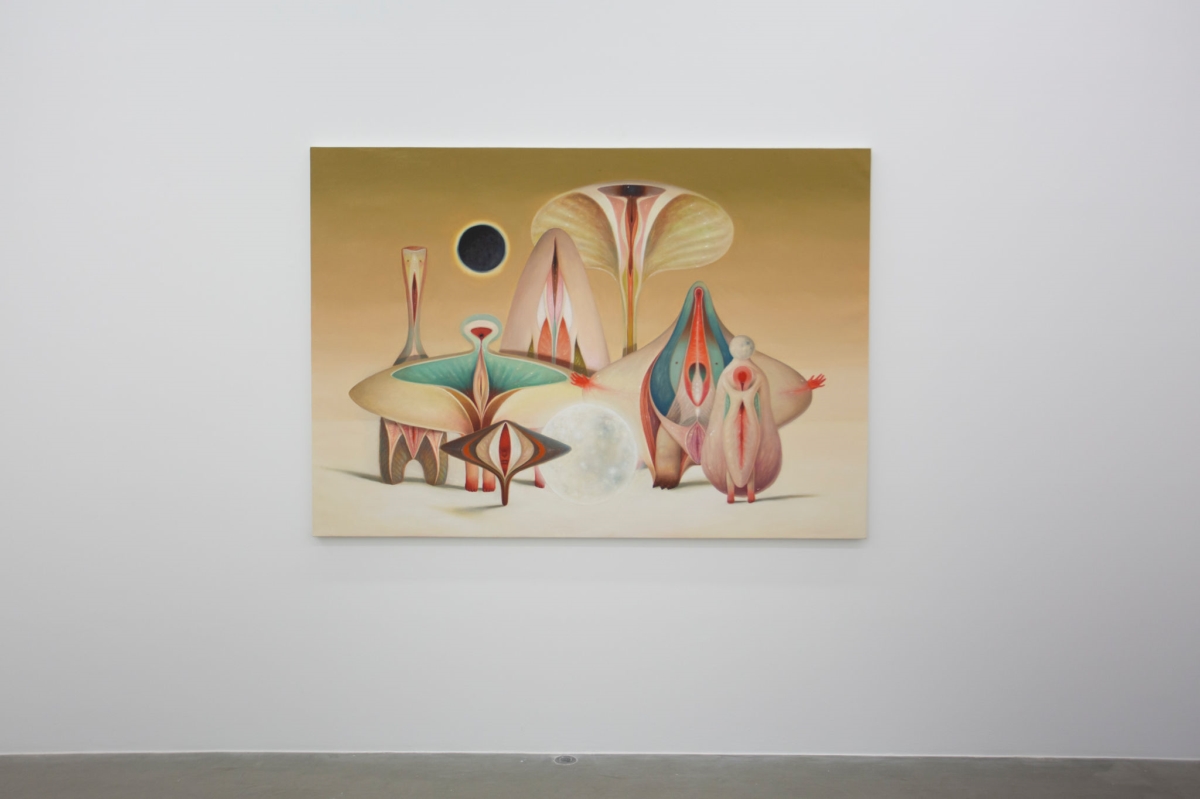
© Roby Dwi Antono / Courtesy of the Artist and Almine Rech
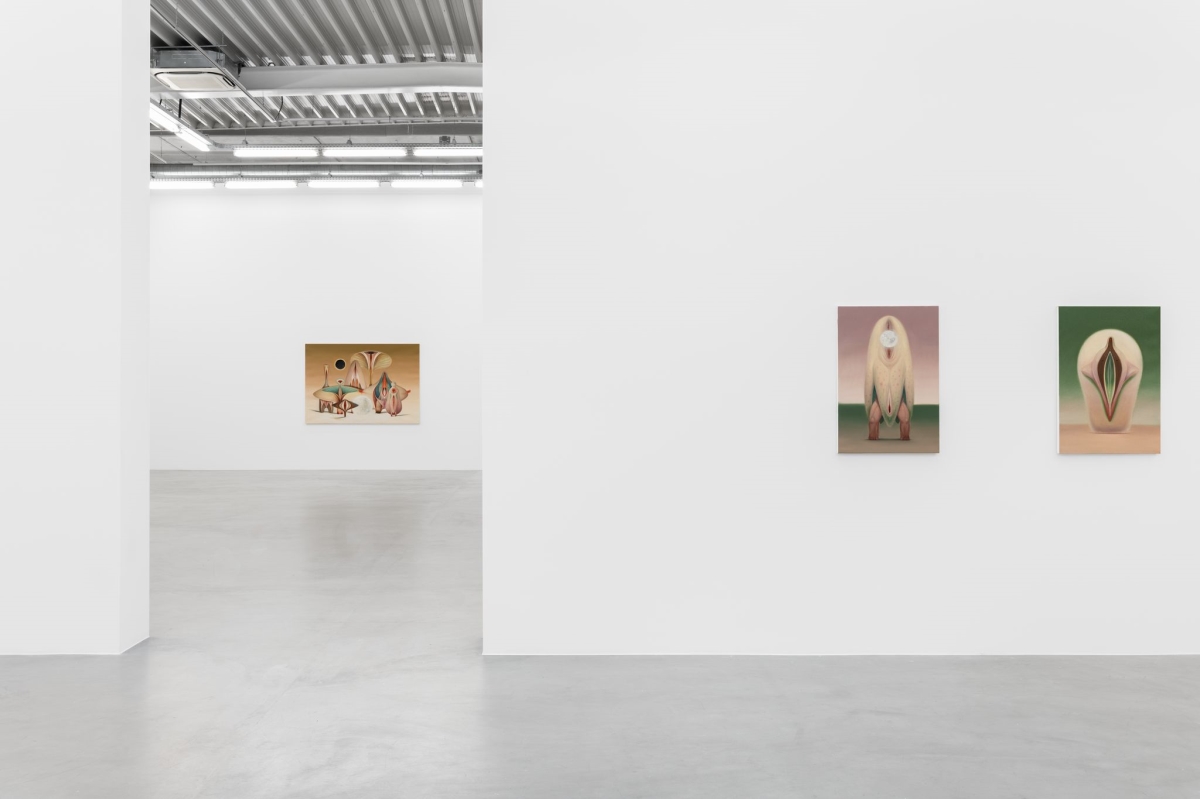
© Roby Dwi Antono / Courtesy of the Artist and Almine Rech
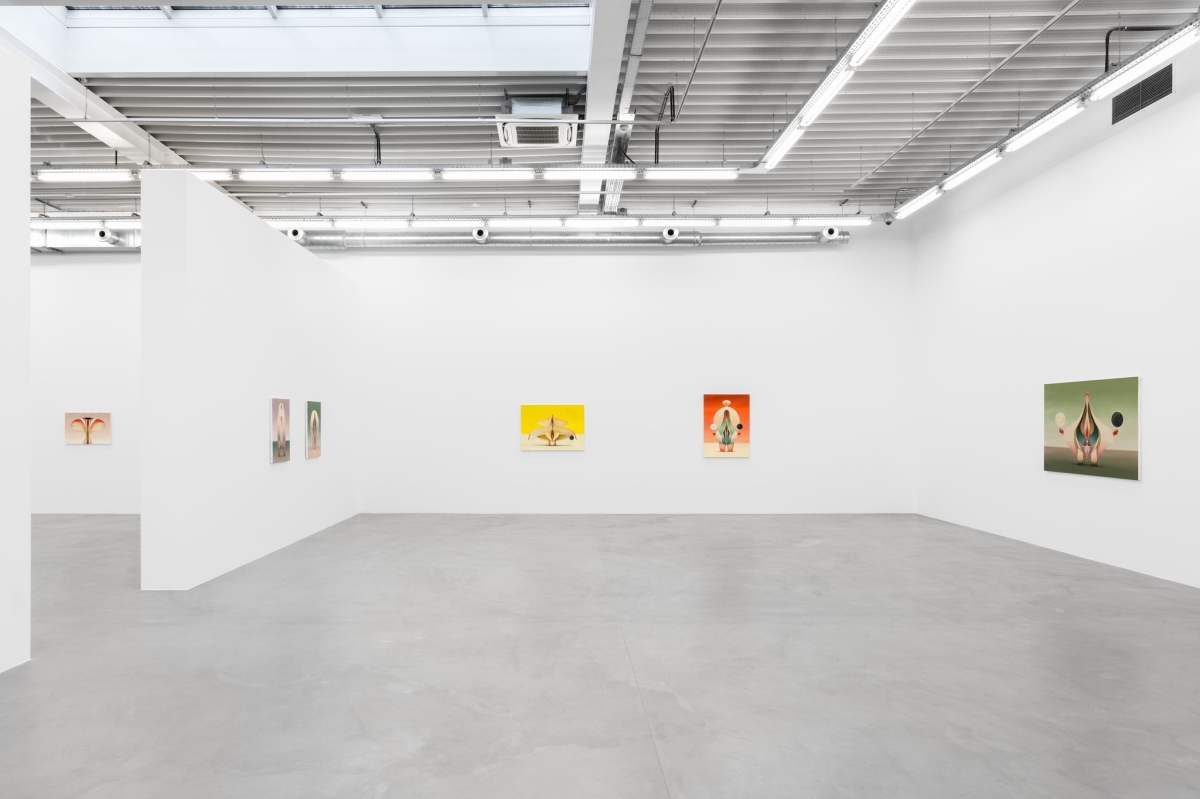
© Roby Dwi Antono / Courtesy of the Artist and Almine Rech
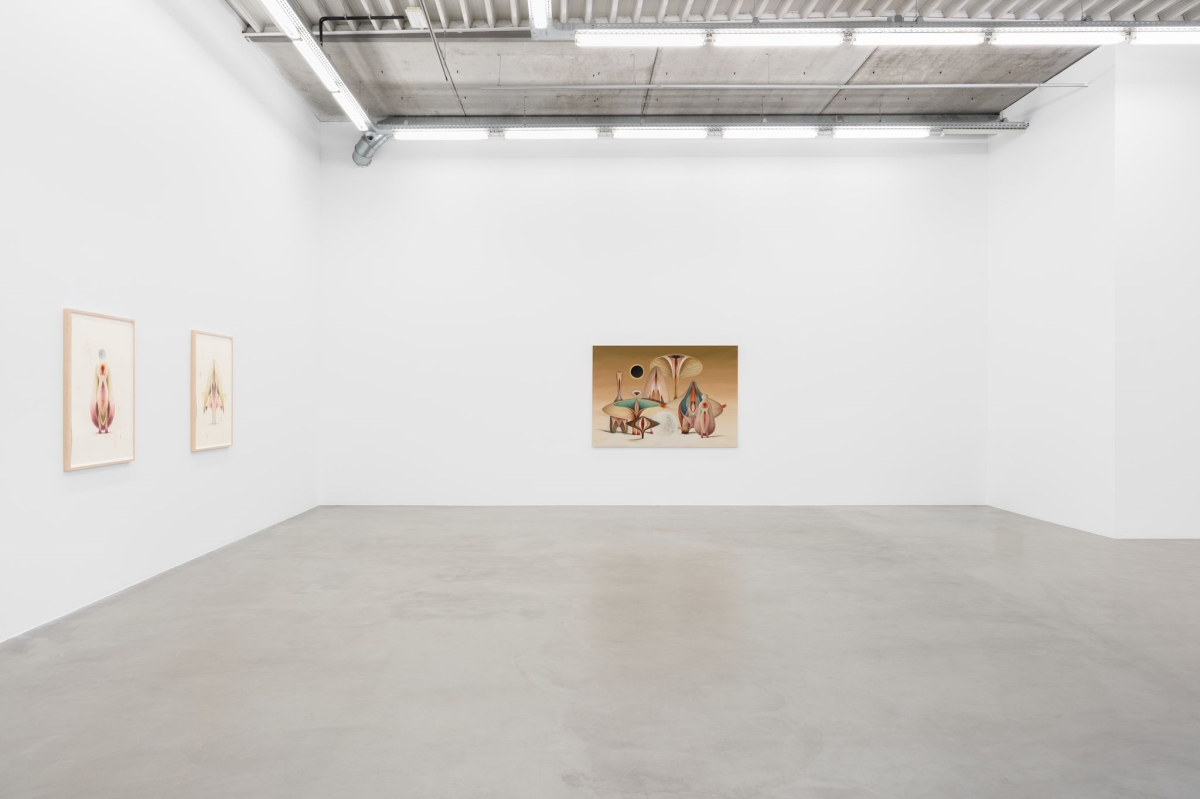
© Roby Dwi Antono / Courtesy of the Artist and Almine Rech
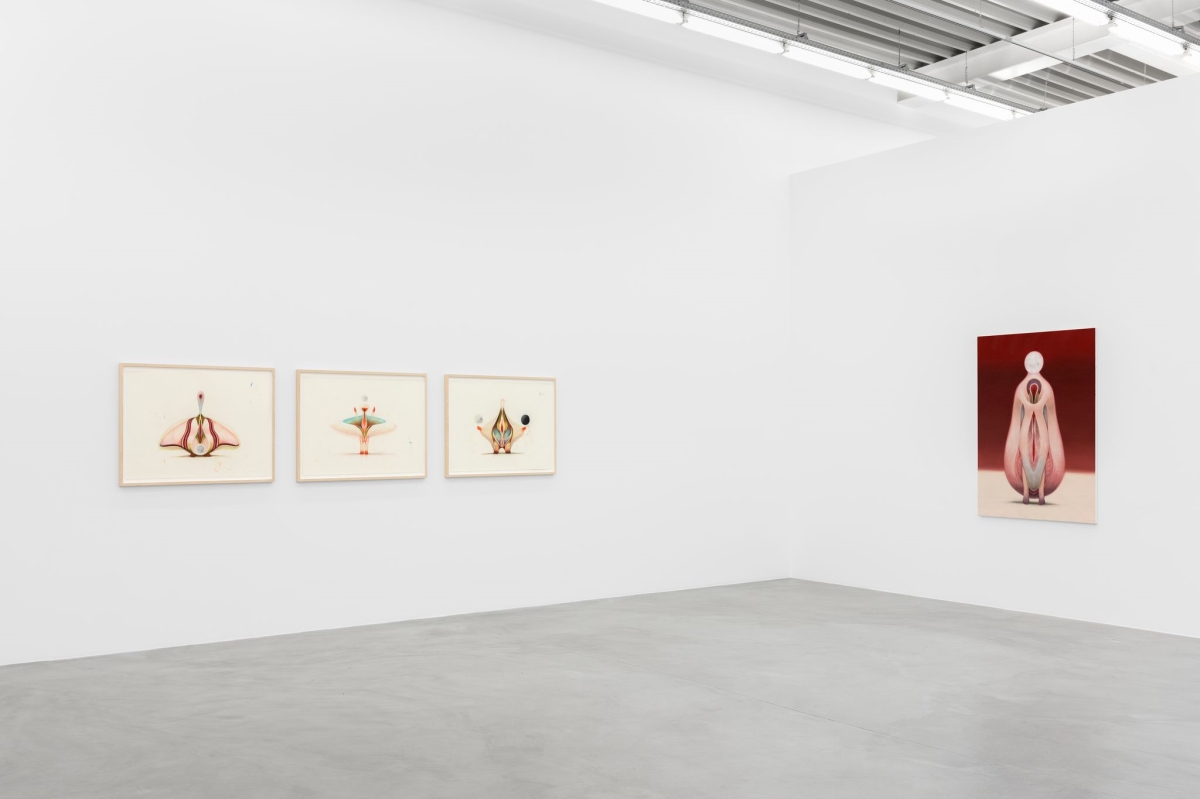
© Roby Dwi Antono / Courtesy of the Artist and Almine Rech
How do you define yourself as an artist?
I’ve never thought about that. Let people do it instead of me.
How would you describe your painting’s language?
I think my work’s visual language is quite poetic—not straightforward.
Describe a typical day in your studio. Do you listen to media or music while creating?
I prefer to start painting in the morning and finish in the evening. The morning air is calm, and I still have full energy after waking up. I also love feeling the sunshine rather than working under lamplight. So, my productive time is from morning to evening. Sometimes, I draw on paper at night after painting a large canvas.
I like to listen to a random playlist while painting. When I need to be more focused, I prefer to enjoy the sounds of nature around me. Sometimes, it’s more relaxing that way.
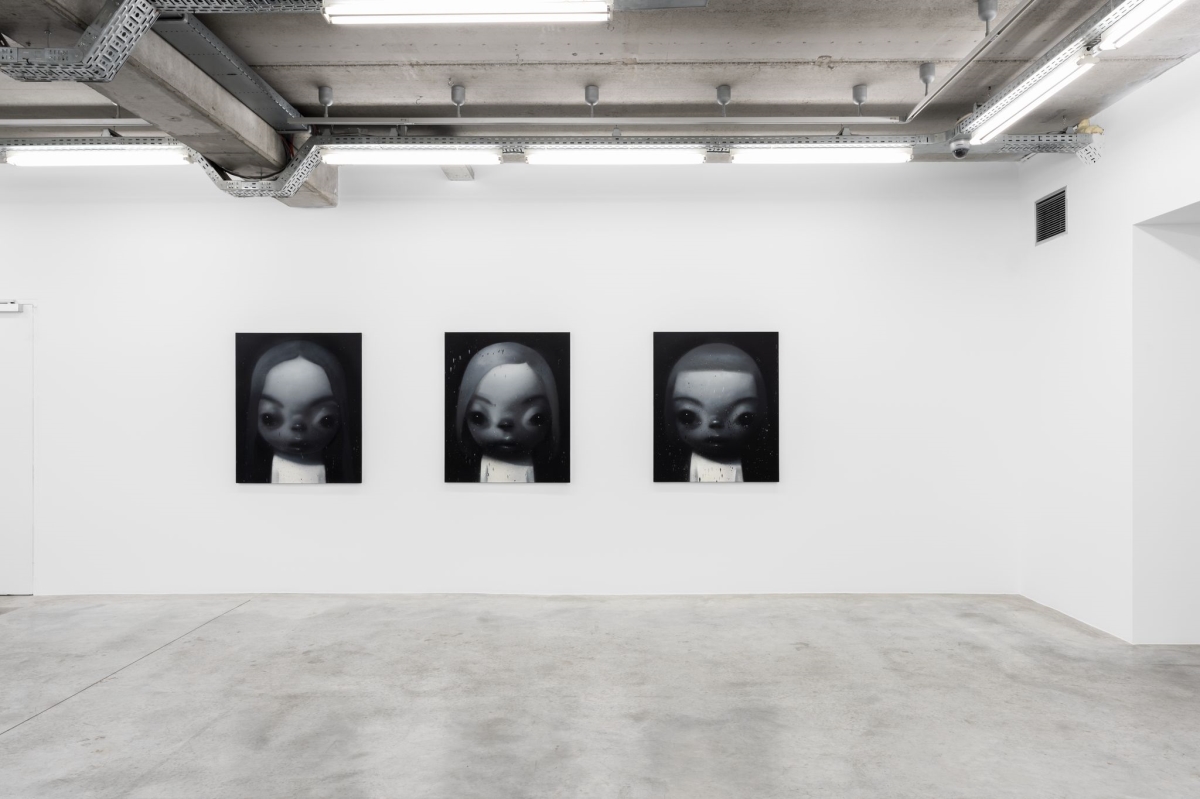
© Roby Dwi Antono / Courtesy of the Artist and Almine Rech
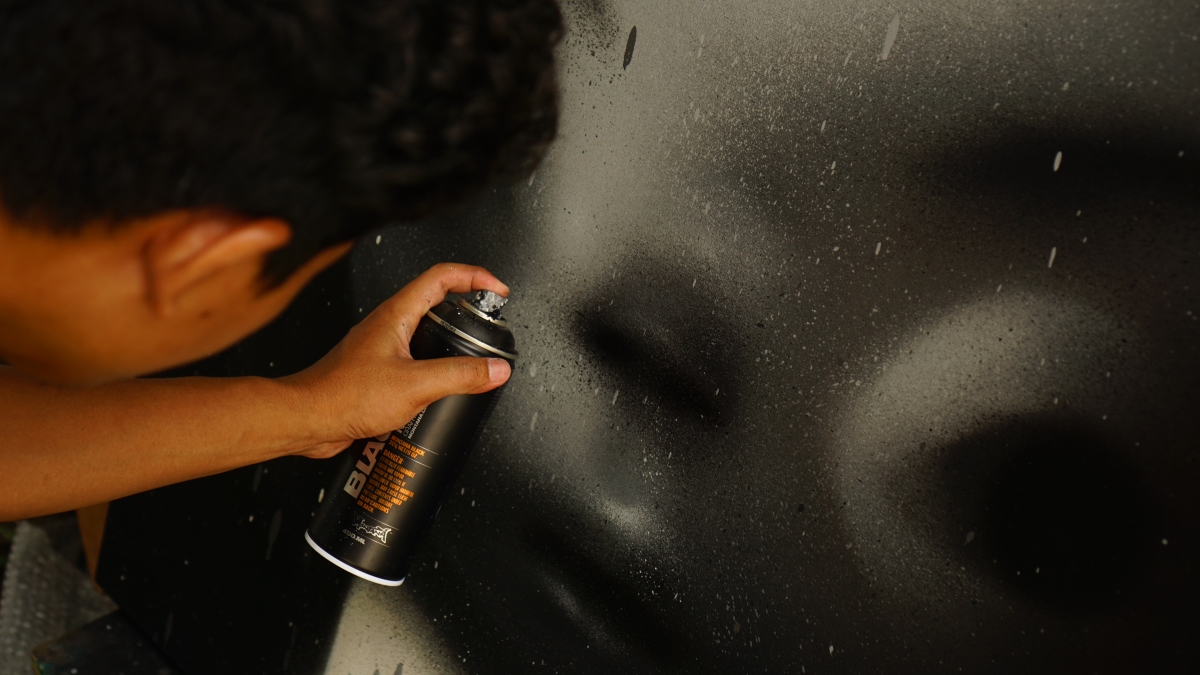
© Roby Dwi Antono / Courtesy of the Artist and Almine Rech
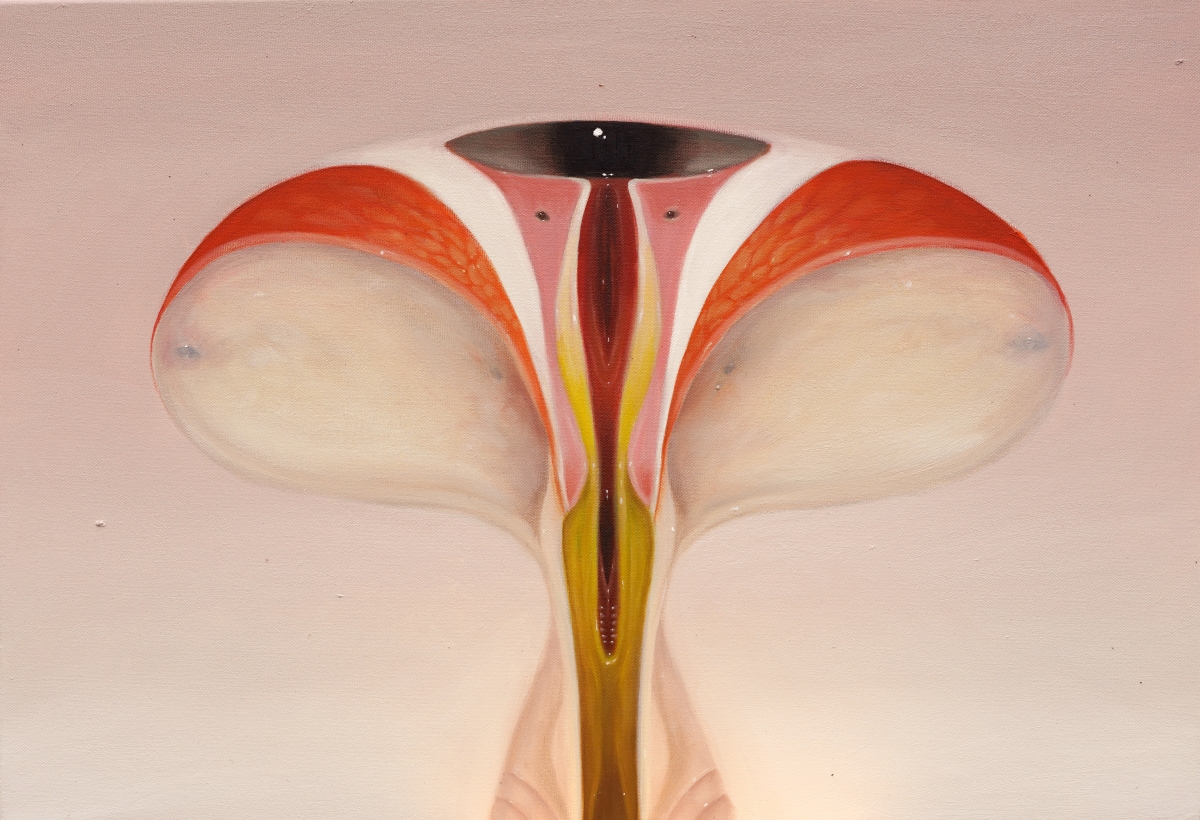
© Roby Dwi Antono / Courtesy of the Artist and Almine Rech
What other things do you like to do besides paint? Do you have other hobbies?
Yes, I love soccer. My childhood dream was to be a professional soccer player, playing for Real Madrid. (haha)
Worldwide recognition has taken your work to different continents. Can you imagine living outside Indonesia?
I once imagined living in a valley at the foot of the mountains on the outskirts of villages in Europe, like Switzerland. However, I can’t stand cold weather, so Indonesia is perfect for me! (haha)
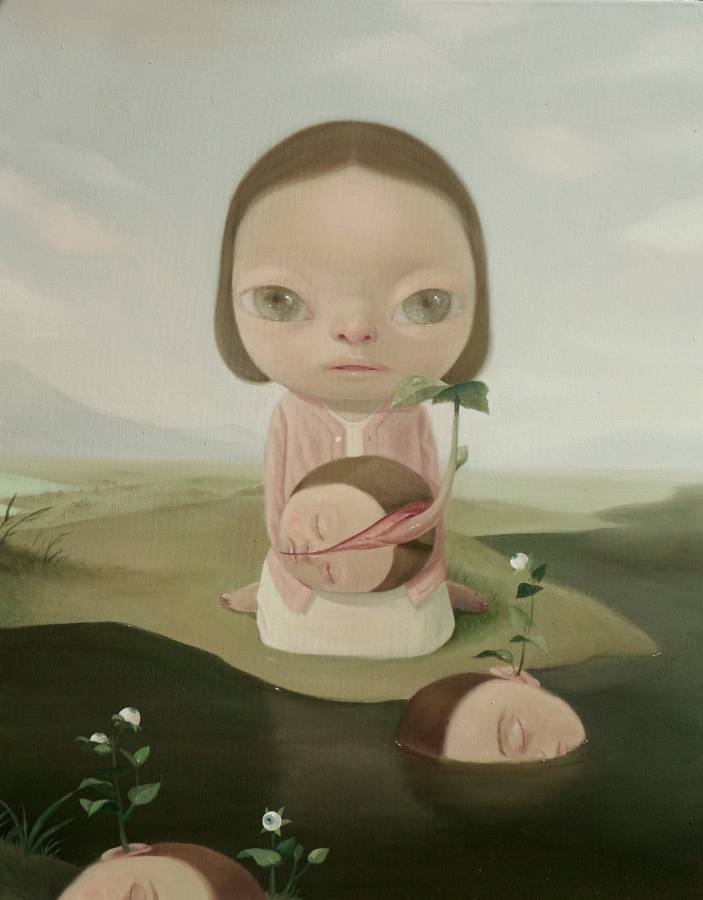
© Roby Dwi Antono. Courtesy of the Artist.
Being an introvert, how do you handle public recognition?
Step by step, I’ve learned to accept and deal with it. I’m still learning how to speak in public and calmly deal with people’s curiosity. I’m also figuring out how to communicate, especially with new people. I find it difficult but I’m working on handling public recognition better.
Which of your shows has impacted people the most and given you the most satisfaction?
So far, the most satisfying show was my last solo exhibition with Almine Rech in Brussels. I’m satisfied and very excited about developing and exploring my new series whose theme and concepts are in line with the exhibition concept.
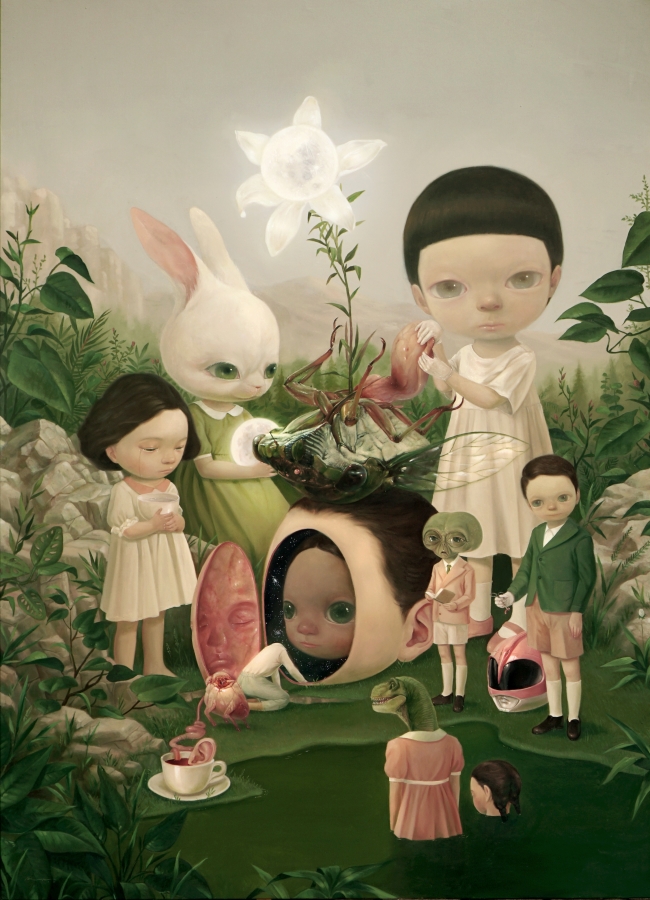
© Roby Dwi Antono. Courtesy of the Artist.
Can you describe the public’s reaction to your work? Have you learned any lessons from their responses?
I like how the audience uniquely interprets my paintings. I believe that every artwork exhibited in public spaces or published on social media will be enjoyed by others, and art belongs to the audience. Multiple interpretations are reasonable. I don’t want the viewers’ interpretation to be the same as mine. Similar to a song or a poem, I want my paintings to evoke feelings that might be different for everyone who sees them. And I love my works to be a little bit poetic.
For example, when my works were exhibited at an art fair, lots of people came and saw my paintings. Some of them looked confused, frowned, and left. Some were excited and tried to start a conversation with me. There was a girl who came to my exhibition. She really wanted to understand my painting. But I responded with questions, asking about her feelings and reactions. When she offered her interpretation, I was fascinated since the meaning she conveyed was deeper than the simple things I wanted to express. She connected my painting’s visual language to her past. Since then, I have decided to refrain from answering people’s questions about the meaning of my paintings.
Is there a creative project you can share with us? Which artist would you like to collaborate with?
My dream is to work with one of my favorite artists such as Yoshitomo Nara or Mark Ryden.
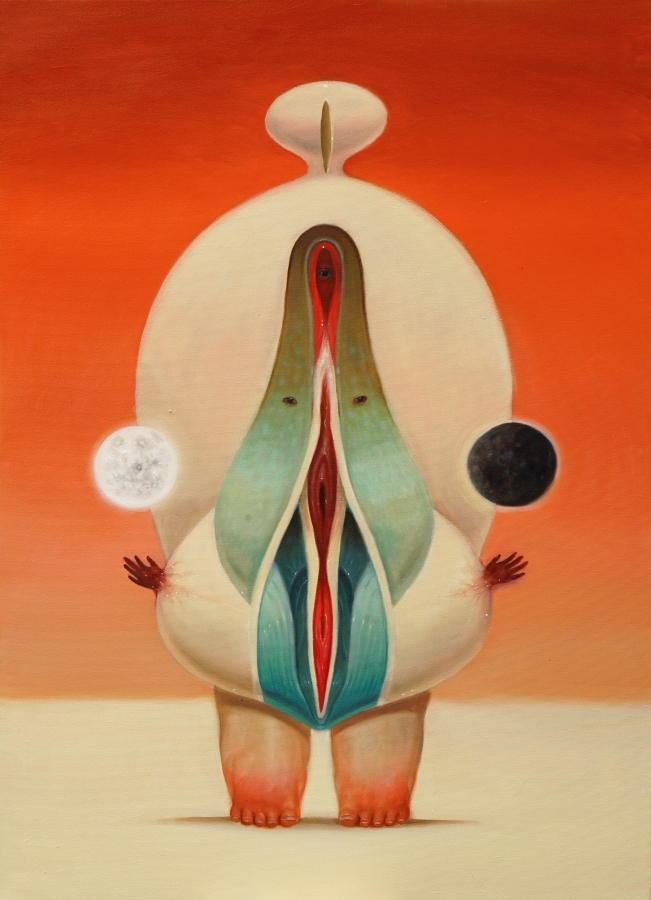
© Roby Dwi Antono / Courtesy of the Artist and Almine Rech
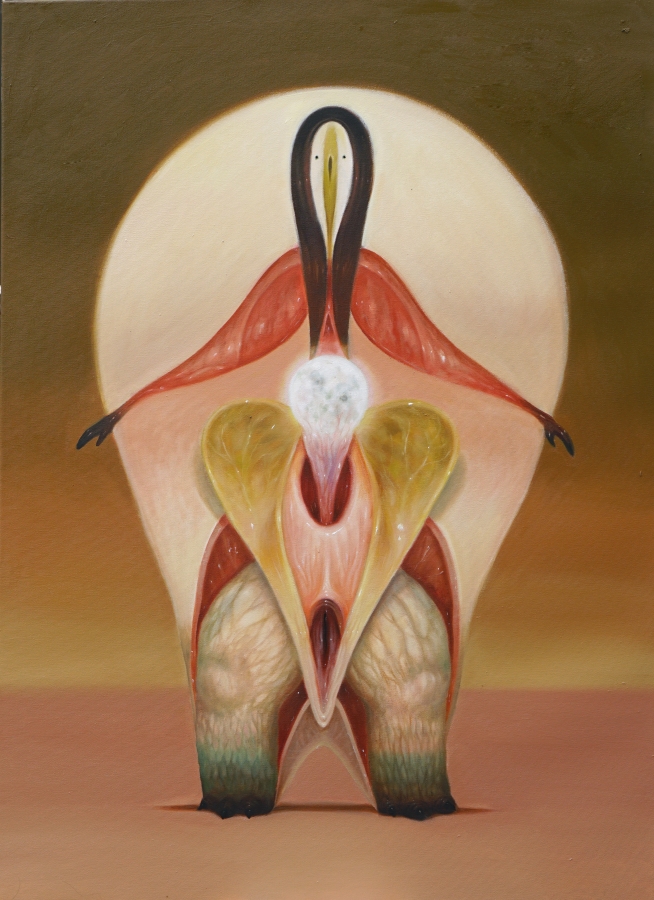
© Roby Dwi Antono / Courtesy of the Artist and Almine Rech
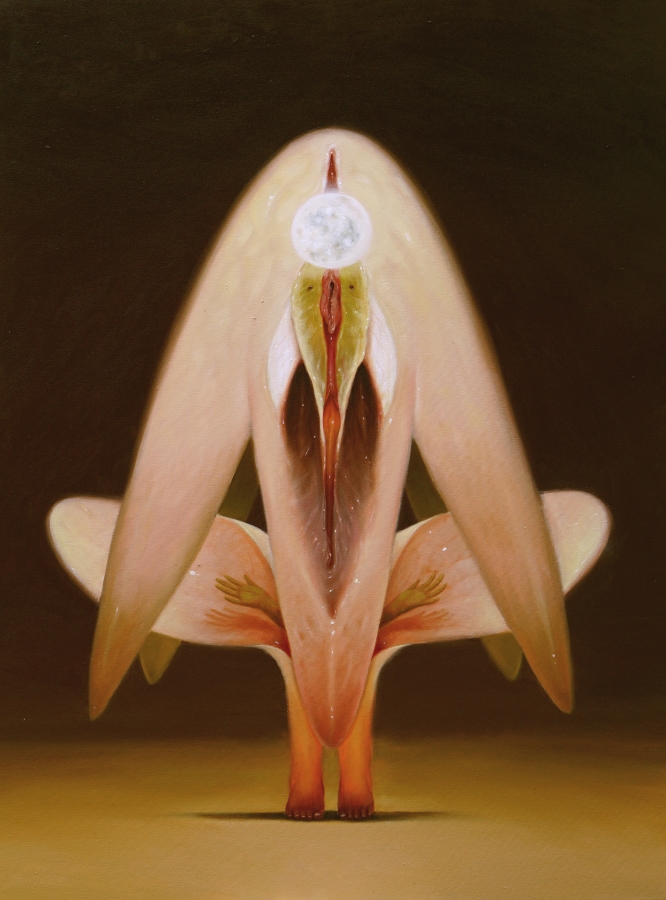
© Roby Dwi Antono / Courtesy of the Artist and Almine Rech
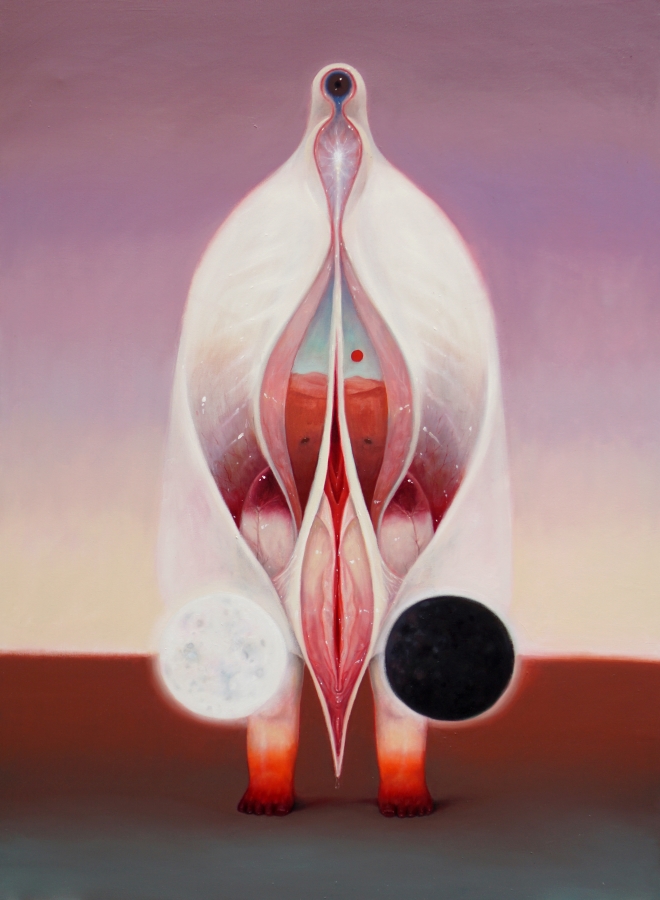
© Roby Dwi Antono / Courtesy of the Artist and Almine Rech
Where would you like to go with your art?
I will go wherever my art goes.
Favorite phrase….
“There should be a place where only the things you want to happen, happen.”
― Maurice Sendak, Where the Wild Things Are
Editor: Kristen Evangelista
